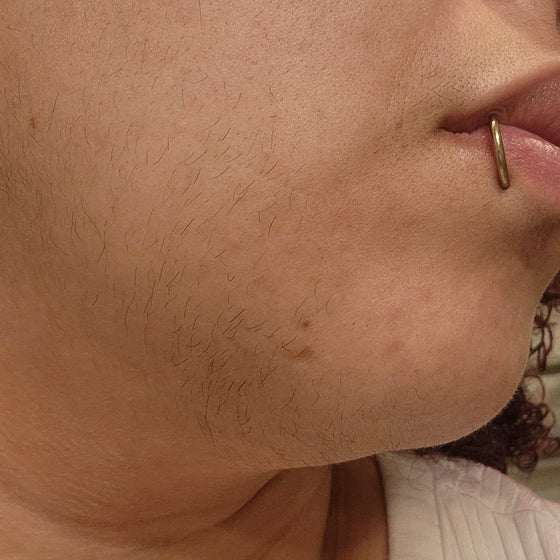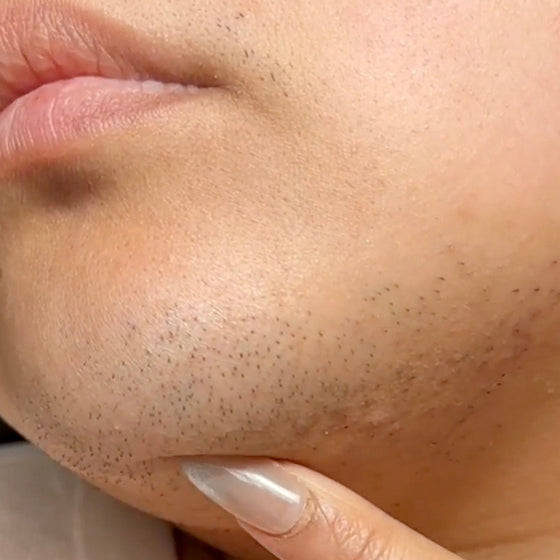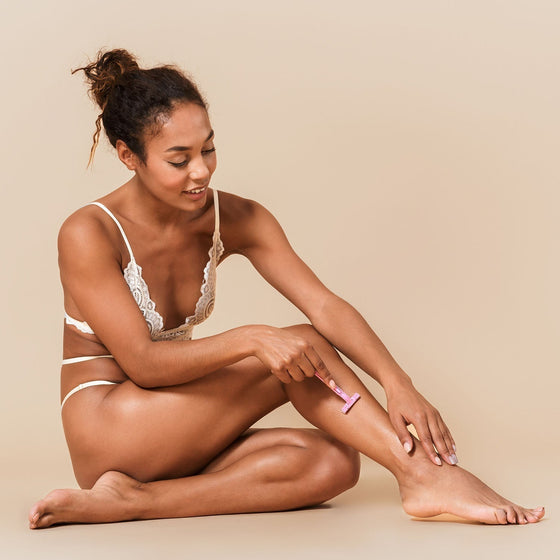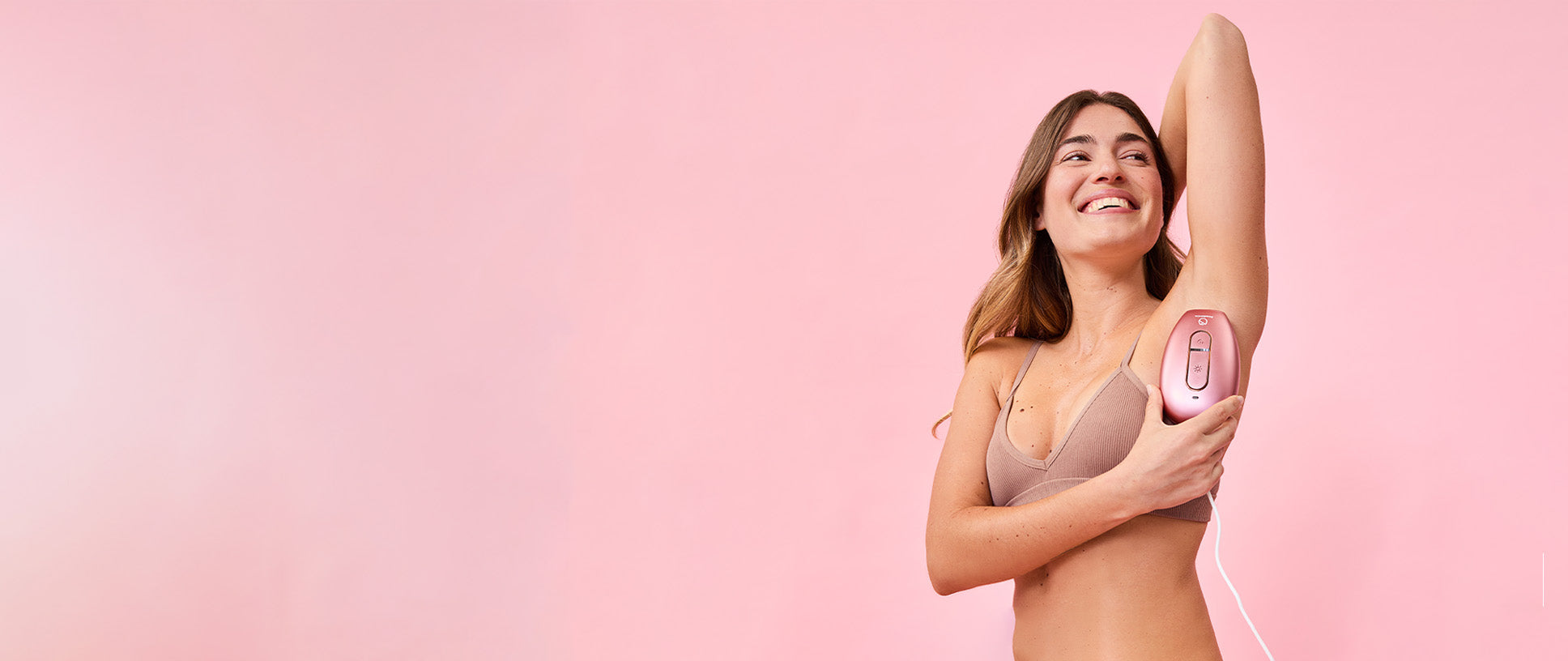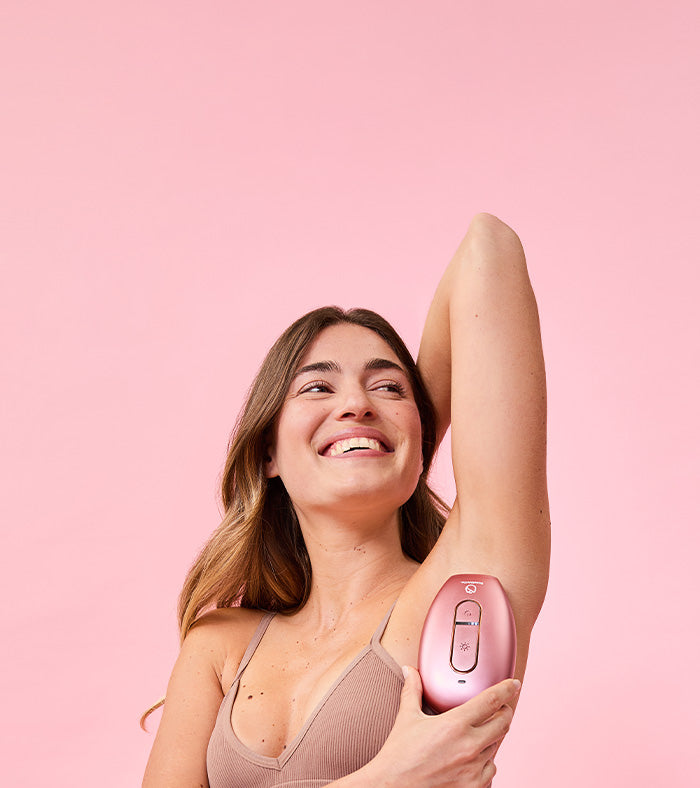We’re going to make a quick assumption here: if you regularly remove your facial hair, chances are you wish it would NEVER grow back. Right???
Dealing with unwanted facial hair springing up is the worst, but sometimes the irritation and discomfort traditional hair removal methods cause can be just as bad.
And yes, female facial hair is normal. But if you’re dealing with excessive PCOS-related facial hair or you simply can’t stand how your peach fuzz makes your makeup look, you should know that you CAN get rid of unwanted facial hair without damaging your skin… and you can even get rid of it for good.
We’ll compare and rank ALL of the most common ways to remove facial hair – and give out a few Facial Hair Removal Awards while we’re at it.
Table of Contents:
10 Facial Hair Removal Methods Ranked, From Best to Worst
Best Overall Method for Long-Term Hair Removal
Most Affordable Hair Removal Option
Best for Permanent Hair Removal
Best At-Home Hair Removal Solution
Least Painful Facial Hair Removal
Most Painful Facial Hair Removal
|
Method (Ranked) |
Permanent? |
Pain Level |
Cost |
DIY? |
Ideal for large treatment areas? |
|
IPL |
Yes |
Low |
$$ |
Yes |
Yes |
|
Dermaplaning |
No |
Low |
$ |
Yes |
No |
|
Electrolysis |
Yes |
Very High |
$$$$$ |
No |
No |
|
Laser Hair Removal |
Yes |
High |
$$$$ |
No |
Yes |
|
Threading |
No |
Moderate |
$$ |
No |
Yes |
|
Tweezing |
No |
Moderate |
$ |
Yes |
No |
|
Waxing |
No |
High |
$$$ |
Yes (but tricky) |
Yes |
|
Epilating |
No |
High |
$$$ |
Yes |
Yes |
|
Shaving |
No |
Moderate |
$$ |
Yes |
Yes |
|
Depilatory Creams |
No |
Moderate |
$$ |
Yes |
Yes |
10 Facial Hair Removal Methods Ranked, From Best to Worst
1. IPL Hair Removal (Our Fav)
IPL uses broad-spectrum light pulses to target unwanted body hair. After continued treatment, it’s clinically proven and FDA-cleared to remove facial hair permanently. It’s our fav facial hair removal method because it’s permanent, pain-free, easy to DIY, and affordable. With 1-2 sessions a week, you’ll notice a difference in facial hair growing back in 4 weeks and full results in 6-12 weeks.
2. Dermaplaning
Dermaplaning is a low-cost, pain-free, DIY hair removal method that’s recently become more popular, from cheapo single-use-plastic dermaplaners to professional-grade sonic dermaplaners like Nura. Dermaplaning effectively removes peach fuzz and dead skin cells, instantly revealing smoother, brighter facial skin. (And no, it doesn't make hair grow back coarser or darker, either!) It loses a few points for only providing short-term facial hair removal on its own... but when used in tandem with an IPL device like Lumi for permanent hair removal? Chef's kiss
3. Electrolysis
Electrolysis uses a thin needle to target individual hair follicles and heats them with a small electrical current. It’s FDA-cleared to offer permanent hair removal. Some experts say the long-term results of electrolysis are the best of any permanent hair removal method, and it works on all skin and hair types. The cons? It’s notoriously expensive (like, up to $10k expensive), rather painful, and it can take up to 18 months of continued treatment to see full results.
4. Laser Hair Removal
Laser hair removal targets hair follicles and destroys them with single-laser light pulses. It’s FDA-cleared to offer permanent hair removal. That being said, it’s super expensive, rather painful, and can take up to 12 months of continued treatment to see full results.
5. Threading
Professional threaders use an antibacterial cotton thread to remove hairs at the root. Results last a few weeks. Compared to other methods that remove hair at the root like waxing and epilating, threading is rather affordable, less painful, and more suitable for sensitive skin.
6. Tweezing
It does the trick. Tweezing is easy, fast, and arguably the most affordable. But tweezing happens one hair at a time, so it’s ideal for tackling just a few errant facial hairs – if you’re looking to remove hair all over your face, tweezing is not the move.
7. Waxing
Professional waxes can be expensive, DIY waxing can be messy, and all waxing is notoriously painful, but there’s a reason it’s such a staple: waxing it removes hairs from the root, so results last a matter of weeks instead of days.
8. Epilating
Epilating is an increasingly popular alternative to waxing. Think of it like plucking 100 hairs at once – efficient, yes, but not the most pleasant! Results last as long as waxing. You can do it yourself with a handheld epilator or go to a salon.
9. Shaving
It’s the devil you know, right? It works, it’s cheap, it’s simple. It’s not perfect – hair grows back fast and doesn’t get any sparser with removal, plus it can result in breakouts and irritation. But as long as you wash your face, use a clean, straight-edge, single blade facial razor (not the one you use on the rest of your body!), shaving facial hair does the job.
10. Depilatory Creams
Hair removal creams do work for getting rid of facial hair, but they’re not always the best fit for delicate facial skin. Plus, depilatory creams remove hair at the surface of skin, so hair grows back rather fast.
Best Overall Method for Long-Term Hair Removal: IPL
(Especially with an FDA-cleared permanent hair removal device like Lumi!) IPL permanent hair removal works on your face (below the cheekbones) and just about anywhere else on your body. Treatment takes just 10 minutes, or even less if you’re just targeting a very small area on your face. It’s a pain-free, affordable, safe, highly effective way to get rid of facial hair long-term in just 6-12 weeks.
Most Affordable Hair Removal Option
TWEEZING. Think about it – those tweezers you bought when you were a tween are probably still kickin’. So it’s basically free (if you don’t think too hard about the time cost of tweezing every individual hair on your face!)
IPL is the most affordable *permanent* hair removal option.
Best for Permanent Hair Removal
Depends on what “best” means to you.
Technically, ELECTROLYSIS provides the best, most permanent hair removal results – but it takes thousands of dollars, lots of treatments, and as long as 18 months to get there. Plus, you’ll still want to plan on yearly maintenance treatments beyond that.
We’d still say IPL is the all-around best pick for permanent hair removal – it provides a permanent reduction in body hair for a fraction of the cost of electrolysis. Plus, it’s easy to DIY, pain-free, and provides fast results.
Best At-Home Hair Removal Solution
IPL, hands-down. It’s the only at-home hair removal solution that provides permanent facial hair removal.
Least Painful Facial Hair Removal
We’d go with IPL (for permanent, pain-free facial hair removal) or DERMAPLANING (for short-term hair removal) for this one.
Most Painful Facial Hair Removal
ELECTROLYSIS takes the cake here, followed closely by LASER HAIR REMOVAL.
That being said, both electrolysis and laser hair removal are permanent methods, so that pain is front-loaded and temporary. Honorable mentions go to WAXING and EPILATING – that sh*t’s painful and has to be repeated on the reg.
Best for Quick Results
DERMAPLANING is great in a pinch – it’s fast, it’s easy, it offers additional skin benefits, and results are immediate.
If you’re looking for the quickest permanent hair removal, that’s definitely IPL – it offers full results in 6-12 weeks (compared to 12-18 months for electrolysis or laser hair removal).
Best for Light Hair
ELECTROLYSIS is ideal for permanently removing light hair, since it doesn’t rely on detecting melanin or any contrast between skin and hair color to target individual follicles.
DERMAPLANING is a great short-term option for light-colored peach fuzz.
Best for Dark Skin
ELECTROLYSIS is ideal for permanently removing hair on very dark skin, since it doesn’t rely on detecting melanin or any contrast between skin and hair color to target individual follicles.
IPL is a great option for people with medium-dark skin tones and black hair, though it may not be a fit for more melanated skin.
Best for Hard-to-Reach Areas
Any method someone else does for you. 😅
WAXING and EPILATING at a salon are ideal short-term options.
LASER HAIR REMOVAL and ELECTROLYSIS are ideal permanent hair removal options. (Sure, laser hair removal is expensive, but if you're interested in just treating your face, it'll be less than the cost of whole-body laser hair removal.)
Related: Electrolysis vs Laser Hair Removal
Facial Hair Removal FAQs
Which facial hair removal method is the least painful?
It’s hard to say since pain is subjective, but we’d say either dermaplaning or IPL.
How long does it take for facial hair to grow back?
It depends on the hair removal method you use – with shaving, for example, you might notice some infamous five o’clock shadow. Waxing, epilating, and other hair removal methods that remove hair at the root typically last 2-4 weeks. But with a permanent method like IPL, electrolysis, or laser hair removal, most won’t ever grow back after a full treatment regimen, or will grow back really sparse.
Should you clean your face before or after removing facial hair?
Washing your face before or after facial hair removal is always a good idea! Washing your face before facial hair removal can prepare your skin, remove bacteria, and keep your hair removal device clean. Washing your face after can remove any stray hairs and clean up any residue.
What is the best method for sensitive skin?
Less painful methods like dermaplaning and IPL can be a good fit for sensitive skin. It really varies though – consider doing a patch test to see how your skin reacts whenever you try a new hair removal method.
Can facial hair removal cause skin irritation or acne?
Yes, but it doesn’t have to. Using a dirty razor, performing hair removal on already irritated skin, and not cleaning skin before or after notoriously cause skin irritation and acne.
How much does laser hair removal cost?
The average cost of laser hair removal treatment is $587, per treatment. It typically costs upwards of $2k for full results. Lumi is a popular alternative to laser hair removal. It uses similar technology and provides similar results, but it’s safe to do on your home at home. Lumi costs $229.
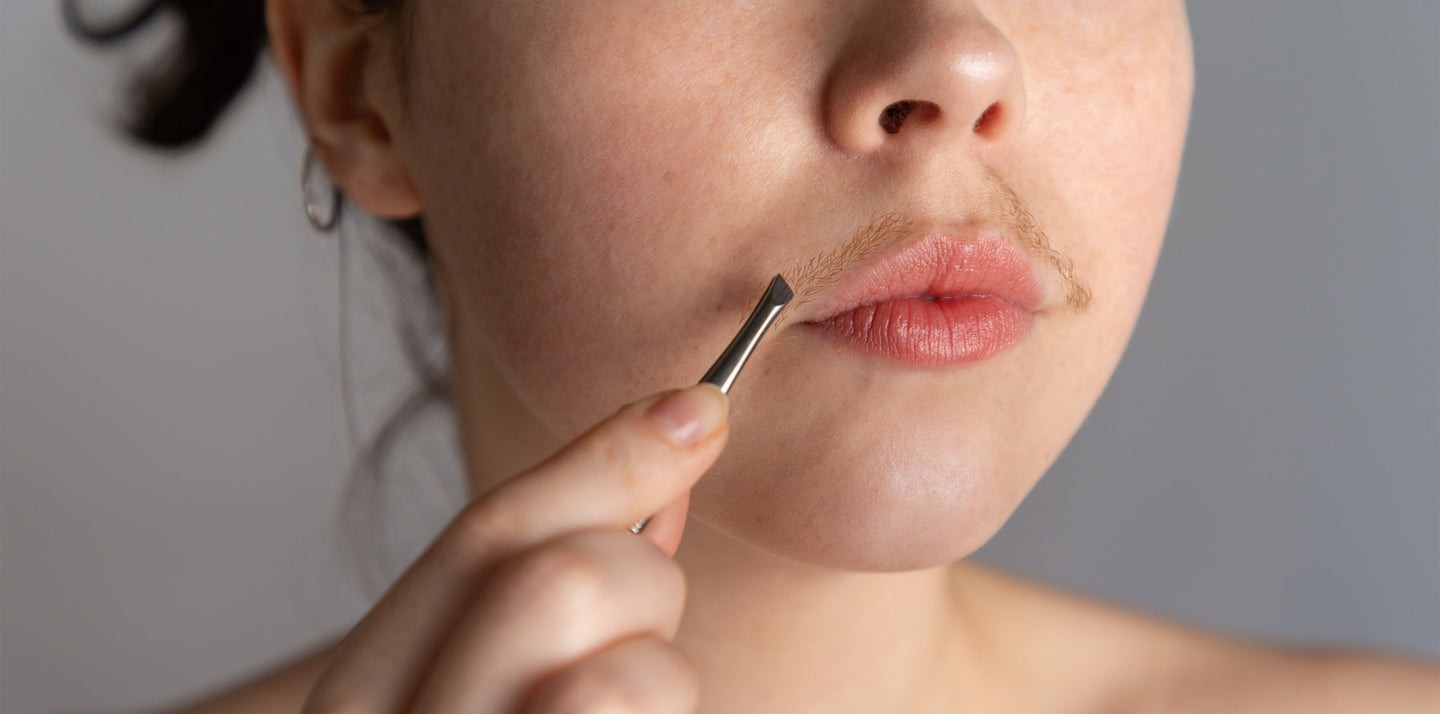
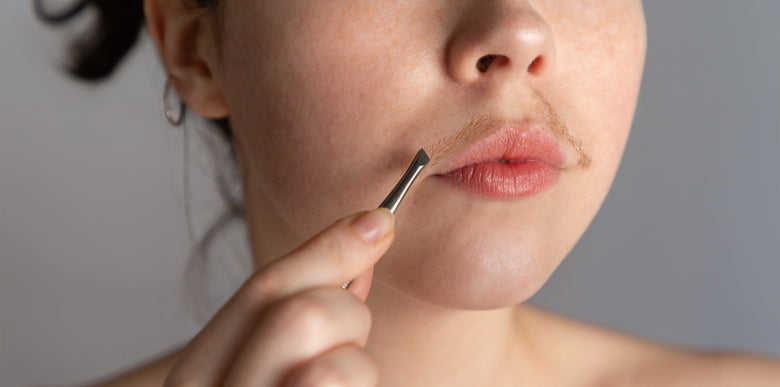
.png?v=1727993165793&options=w_350)
.jpg?v=1724421708187&options=w_350)
